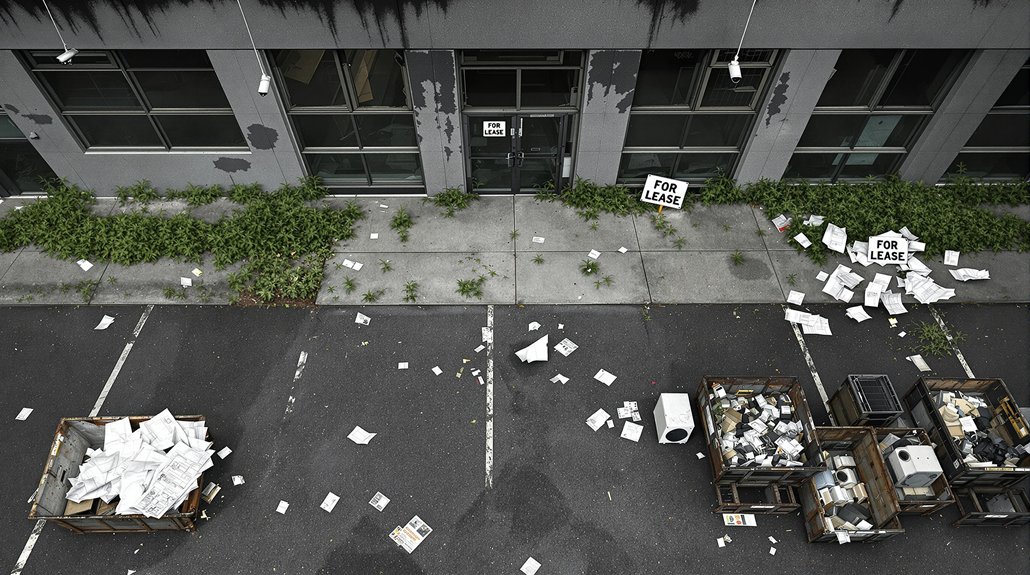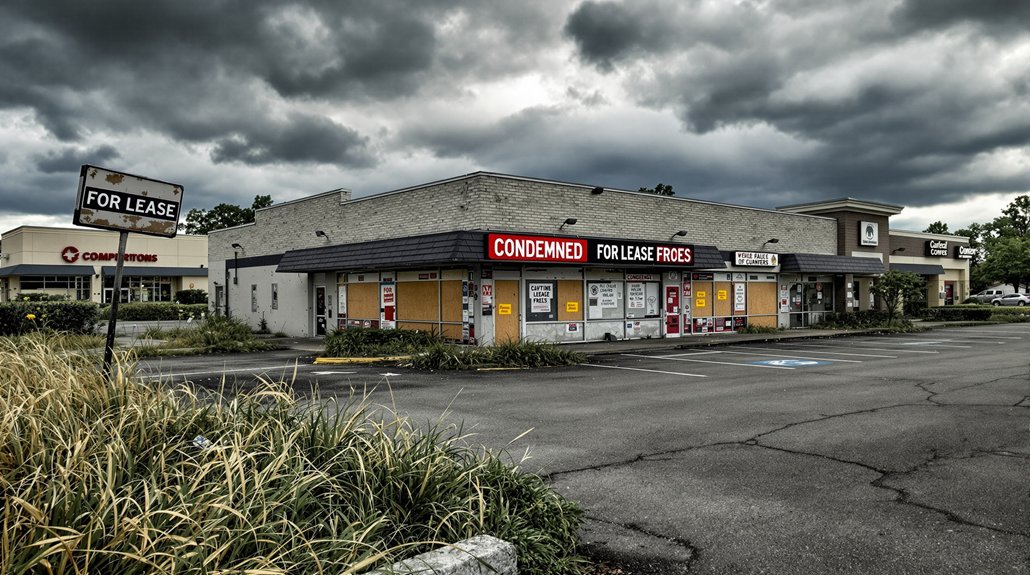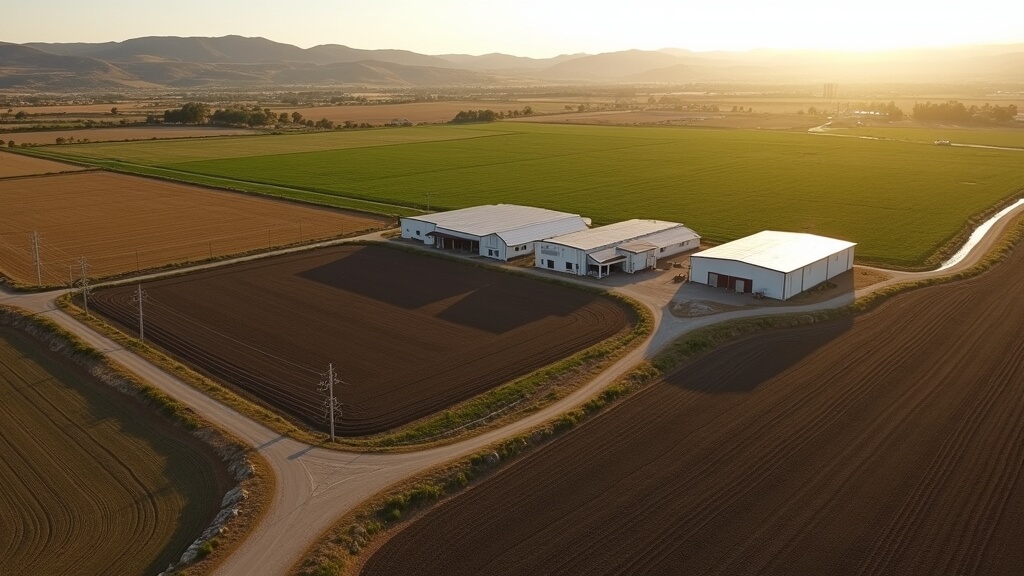Cannabis entrepreneurs consistently underestimate the financial devastation that follows poor location decisions, with industry data revealing that four out of ten operators select sites that doom their ventures from the start. These failures stem from inadequate research into zoning restrictions, local ordinances, and market saturation levels that can transform promising investments into million-dollar losses. The consequences extend far beyond initial setup costs, creating cascading financial problems that force operators to abandon their dreams before serving their first customer. What separates successful operators from this growing graveyard of failed businesses?
The Hidden Costs of Cannabis Site Selection Failures That Destroy Startups

Cannabis entrepreneurs frequently underestimate the financial devastation that poor site selection can inflict on their startups, with many businesses failing before they ever open their doors.
The hidden costs extend far beyond initial rent payments, encompassing regulatory compliance retrofits that average six to seven figures, non-refundable licensing fees totaling hundreds of thousands of dollars, and premium lease rates substantially above market value.
Many operators commit to long-term leases before securing permits, exposing themselves to complete losses if regulatory approval fails.
Property retrofitting for security systems, HVAC modifications, and code compliance creates additional upfront expenditures that deplete working capital reserves. Within this fastest growing sector post-COVID, competition for prime locations intensifies these financial pressures. Local regulations significantly impact business viability and can force costly relocations when zoning restrictions change unexpectedly.
These cascading expenses, combined with extended pre-revenue periods during permitting delays, create a perfect storm of financial pressure that destroys startups before operations begin. Operators must also navigate the complexities of maintaining proper seed-to-sale tracking systems that satisfy stringent regulatory requirements for their chosen location.
Why California’s Cannabis Graveyard Should Terrify Every New Operator
While poor site selection devastates individual startups, the broader market dynamics reveal an even more chilling reality for aspiring cannabis entrepreneurs.
California now reports 10,828 inactive and surrendered cannabis business licenses versus only 8,514 active licenses, meaning closed operations outnumber functioning ones. This dramatic reversal occurred seven years after legalization, representing a systemic collapse rather than temporary market adjustment.
California’s cannabis market shows a devastating 10,828 inactive licenses versus only 8,514 active ones, a systemic collapse.
The widespread failures span all sectors, with over 1,100 distribution licenses, nearly 500 delivery licenses, and more than 300 retail licenses now inactive. The regulatory burden of overregulation increases operational costs for legitimate cannabis businesses, making them less competitive against illicit operators. These struggling businesses face effective tax rates of 40-80% due to Section 280E restrictions, compared to the standard 21% corporate rate for non-cannabis companies.
Active cultivation licenses plummeted 43% from 2021 to 2024, while legal businesses compete against an illicit market supplying approximately 60% of California’s cannabis consumption. Despite the cannabis industry being designated as essential businesses during the pandemic, allowing continued operation when other sectors faced shutdowns, the long-term survival challenges have proven difficult for most operators.
Regulatory Landmines and Competition Traps That Kill Profitable Locations

Even when entrepreneurs identify seemingly ideal locations with strong demographics and favorable real estate conditions, hidden regulatory complexities and competitive dynamics can transform profitable sites into financial disasters.
Zoning laws, buffer zone requirements, and retail license caps create unexpected barriers that supersede traditional real estate fundamentals. Authority Having Jurisdiction rules vary dramatically between municipalities, forcing operators to navigate unique local restrictions even in legal states. Many entrepreneurs lack experience with stringent regulatory environments, leading to costly compliance failures that force closures.
License quotas in markets like New York limit entry opportunities, while California’s open-licensing approach has created oversaturation and price wars. Established illicit sellers continue undermining legal operators by avoiding taxes and regulations, particularly in saturated markets. Cannabis operators must also consider workplace hazards specific to cultivation and processing facilities when evaluating potential sites.
Local voter referenda and city council actions can instantly invalidate site investments, while neighborhood opposition frequently triggers costly legal challenges that derail planned openings.
Bulletproof Location Strategy: How Smart Operators Avoid the $2M Death Spiral
Since many operators approach location selection with the same flawed mindset used in traditional retail businesses, they often overlook the unique risk factors that can trigger financial losses in cannabis ventures.
Smart operators implement extensive demographic analysis, examining population density, median household income, and neighborhood acceptance levels before committing to any site. They prioritize locations with proven infrastructure capable of supporting cannabis-specific security, ventilation, and storage requirements while maintaining secure control through ownership or favorable lease terms.
Successful operators also conduct thorough competitive mapping to identify underserved markets, avoiding oversaturated zones that lead to revenue cannibalization. They analyze regional growth trends, monitor city planning developments, and engage early with local officials to position themselves advantageously.
This methodical approach prevents the common mistakes that result in substantial sunk costs before operations even begin.
Understanding regional tax structures is critical when selecting a location, as these vary widely across jurisdictions and directly impact consumer pricing and overall business viability.
For more information, check out our Guide to Cannabis Real Estate.









